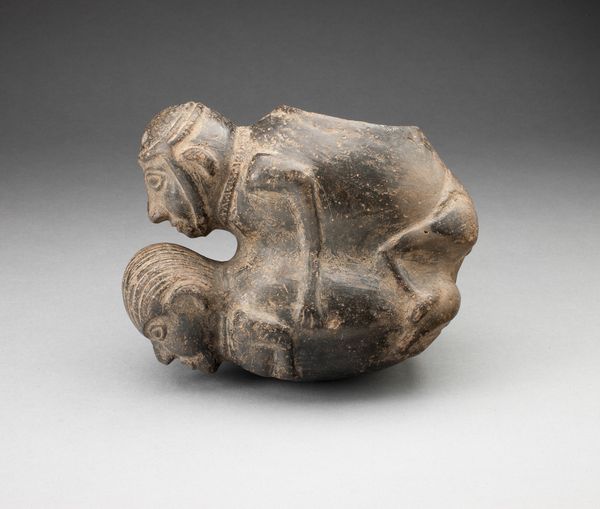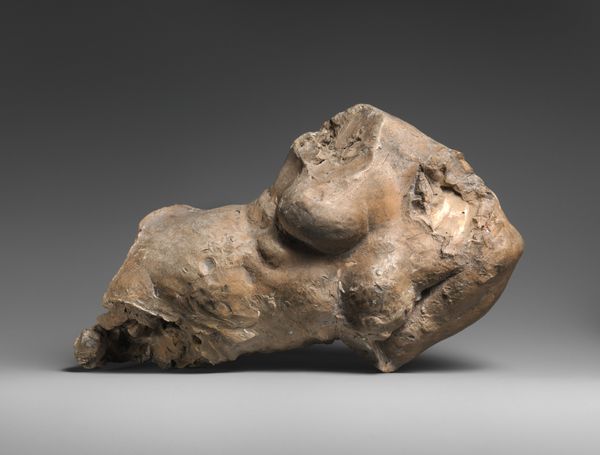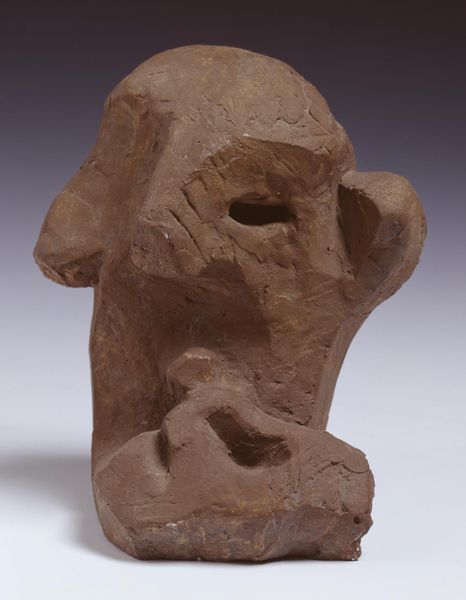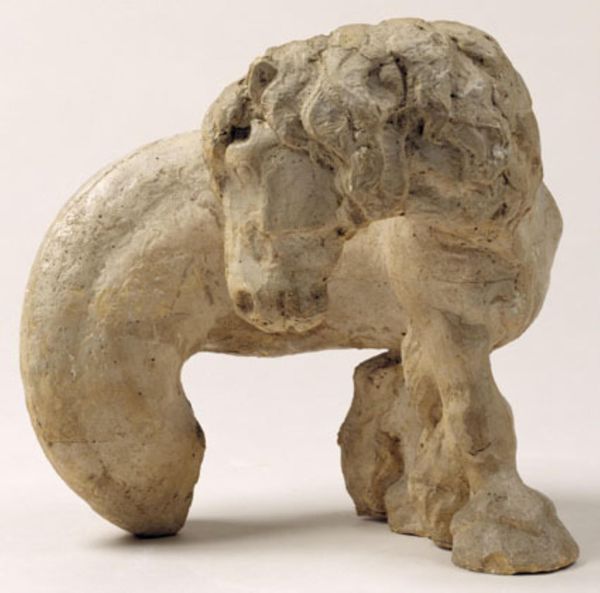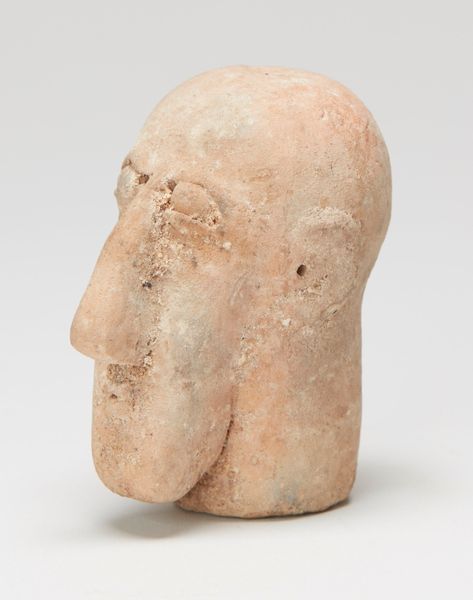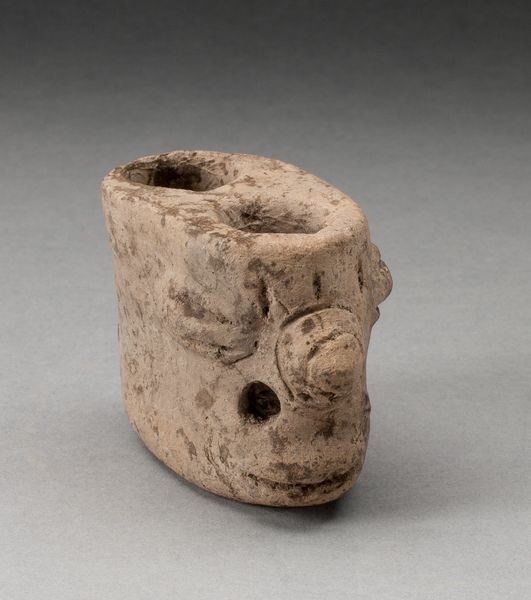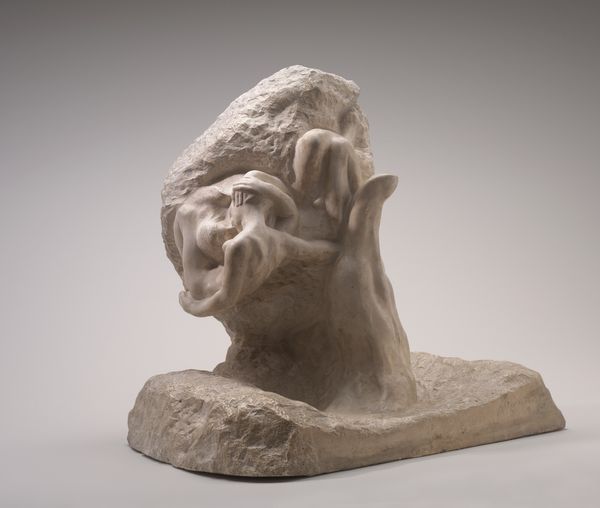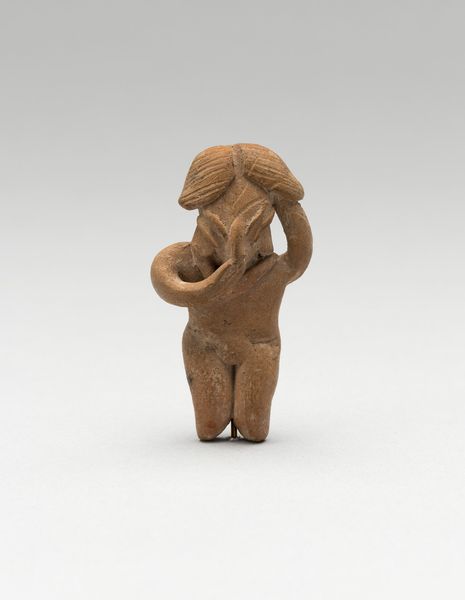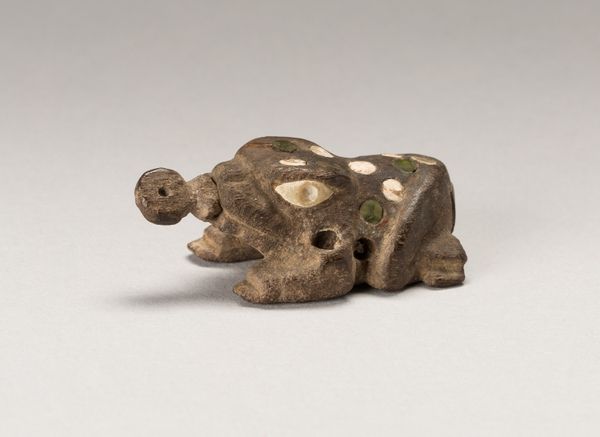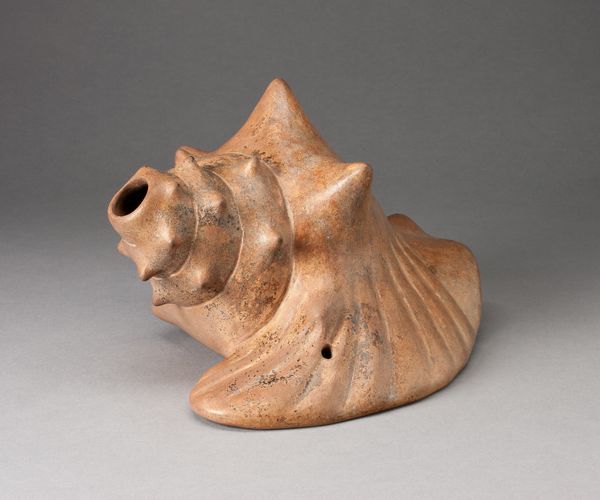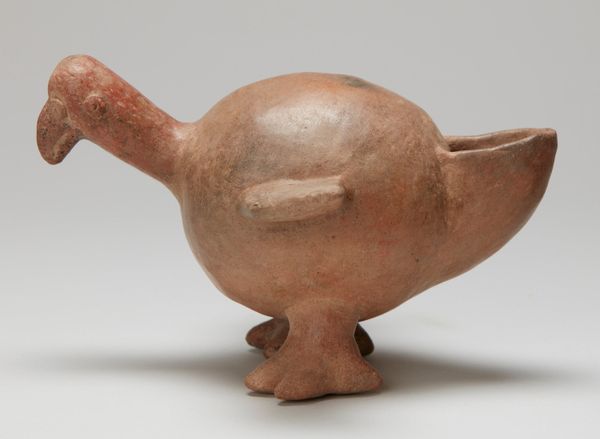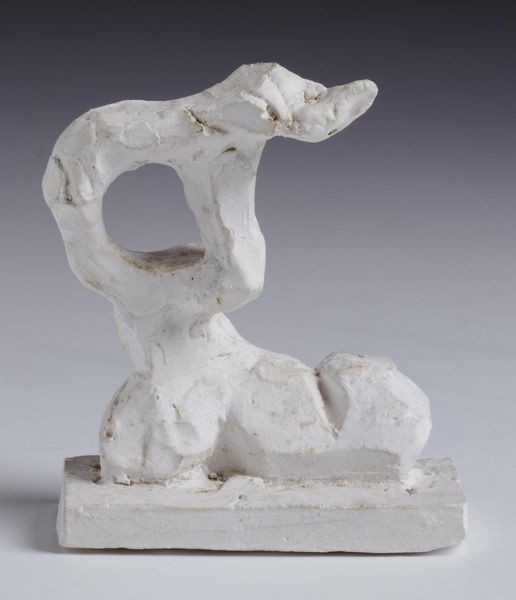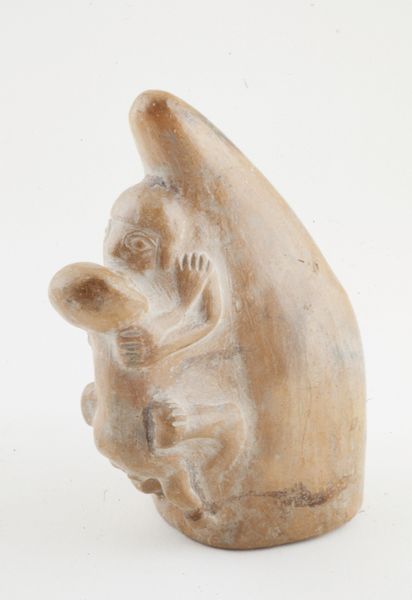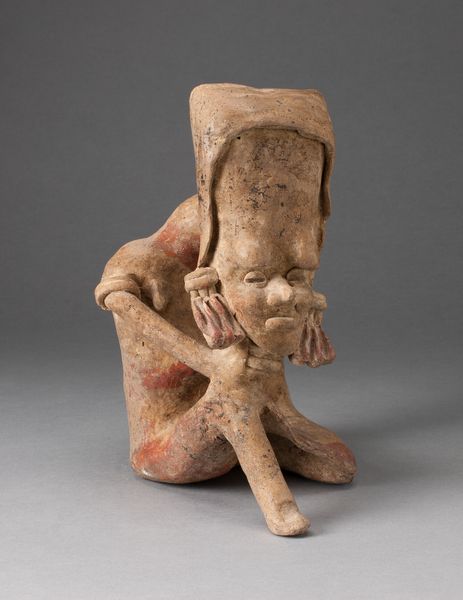
carving, sculpture
#
carving
#
sculpture
#
figuration
#
form
#
sculpture
#
indigenous-americas
Dimensions: 7 5/8 x 5 1/8 x 9 in. (19.37 x 13.02 x 22.86 cm)
Copyright: Public Domain
Editor: This is an intriguing carving, titled "Pipe," dating back to around 1200, and it’s attributed to the Mississippian culture. Crafted from wood, its rounded, almost abstract human form evokes a sense of serene introspection. What stands out to you about its form? Curator: The formal organization of this piece presents a fascinating interplay between representation and abstraction. Notice the careful simplification of the facial features—the subtly incised eyes, the gently protruding lips. Consider how these elements contribute to an overall impression that prioritizes smooth volume over detailed realism. How does the materiality of the wood contribute to your experience? Editor: The warm tone and tactile quality of the wood make it feel very approachable. It seems to soften the edges and create a sense of unity. It’s definitely more inviting than, say, cold marble might be. Curator: Precisely. The inherent properties of the wood, its grain and density, inform the artist’s carving choices. The artist seems to be respecting and utilizing the material, creating a synergy between subject and substance. Is it a portrait? An idealized form? Or something else? Editor: I initially saw it as a portrait, but I'm starting to see that the emphasis on the form itself might be more important than representing a specific individual. Curator: Indeed. The form becomes the primary subject, inviting reflection on the nature of shape, volume, and the very essence of being. The “Pipe” seems less about a likeness and more about a study of sculptural form. Editor: I see what you mean. Looking at the form this way, I am noticing how simplified yet complex the design truly is. It is almost as if I can trace the curvature over and over again with my eye. Curator: Exactly! Close looking yields an appreciation of craft, and in so doing, grants us insight.
Comments
minneapolisinstituteofart almost 2 years ago
⋮
Chiefly warfare spread among the societies across the middle of North America beginning around 1000 CE. The rulers struggled for power and prestige, battling against neighboring chiefdoms for supremacy. Conflict permeated all aspects of life and as a result was reflected in the art produced at that time. This pipe represents a prisoner taken in war, and its large size indicates that it had ceremonial use as a shared smoking device. It depicts a defeated warrior deprived of all marks of rank and privilege except for his beaded forelock of hair, bound helplessly into a humiliating position. Objects such as this pipe were used ritually to ensure victory against one's enemies.
Join the conversation
Join millions of artists and users on Artera today and experience the ultimate creative platform.
